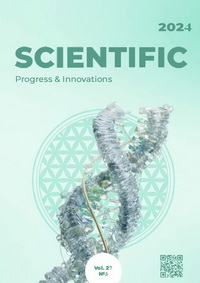Parasitic contamination of environmental objects with nematode eggs of Trichuris genus in the city of Poltava
DOI:
https://doi.org/10.31210/spi2024.27.03.19Keywords:
parasitology, trichurosis, dogs, nematode eggs, contamination levelAbstract
The spreading of dog digestive tract helminthoses, including trichurosis, still remains a topical problem, where one of the factors of significant infestations’ spreading is the contamination of the environment with parasites’ eggs, which can be preserved in the environment for a long time and cause infestation of susceptible animals. Therefore, one of the important factors in maintaining veterinary well-being in relation to dog trichurosis is establishing the contamination level of environmental objects by propagative stages of nematode development. The purpose of the research was to determine contamination indicators of sand and soil in the city of Poltava with nematode eggs of Trichuris genus. The studies were conducted on the basis of the laboratory of parasitology of Poltava State Agrarian University. Sand samples from sandboxes located on the territory of the city of Poltava, as well as soil from the territories adjacent to them were studied. The main contamination indicators were the extensive contamination index and intensive contamination index. It was revealed by the conducted research that 61 out of 90 sandboxes in the city of Poltava were contaminated with nematode eggs of Trichuris genus, where the extensive contamination index made 67.78 %, and the intensive contamination index made 195.79±18.41 eggs/kg. The territory of Kyiv district was the most contaminated with nematode eggs, where 25 out of 30 sandboxes were contaminated with propagative stages of trichurises development, and the level of parasites’ contamination was 83.33 % and 218.91±17.27 eggs/kg. It was found that the most infected sand was taken from the surface at the edges of the sandbox, near its walls, where the extensive and intensive contamination indices made 41.11 % and 320.27±35.43 eggs/kg, respectively. Also, high rates of parasitic infestation were found during studying the soil, taken from the surface at a distance of 1 m from the sandbox, where, on the average, the extensive contamination index was 46.67 %, and the intensive contamination index was 263.90±28.87 eggs/kg. With an increase in the sampling depth, the indicators of contamination with trichurises’ eggs decreased and amounted to: on the surface – 36.67–46.67 % and 120.37–320.7 eggs/kg, at a depth of 5 cm – 14.44–30.00 % and 80.77–274.07 eggs/kg, and at a depth of 10 cm – 8.89–20.00 % and 62.50–125.00 eggs/kg. The obtained results of parasitological studies prove that the territory of sandboxes is a real factor in the transmission of invasive agents, which must be taken into account in assessing the risks of infecting dogs with trichurosis causative agent.
Downloads
Published
How to Cite
Issue
Section
License
Copyright (c) 2024 Scientific Progress & Innovations

This work is licensed under a Creative Commons Attribution 4.0 International License.

 Creative Commons Attribution 4.0 International Licens
Creative Commons Attribution 4.0 International Licens